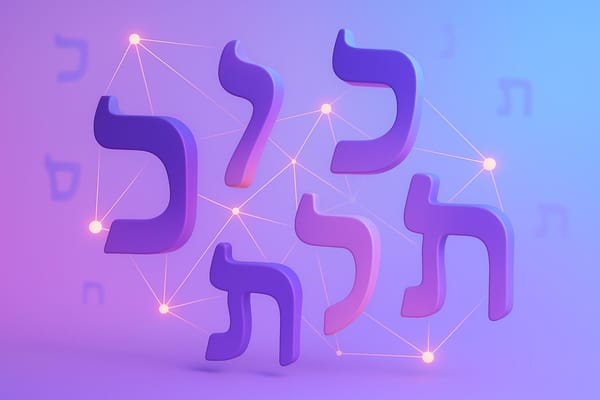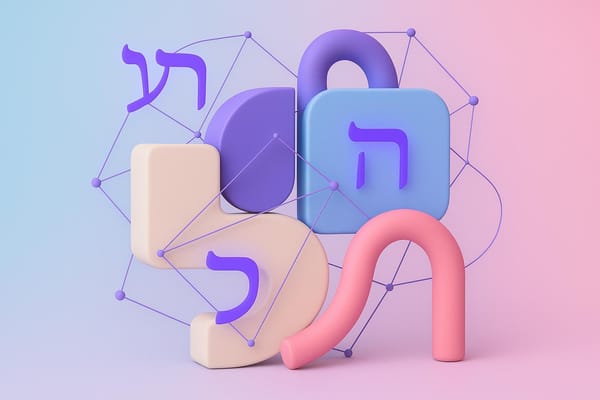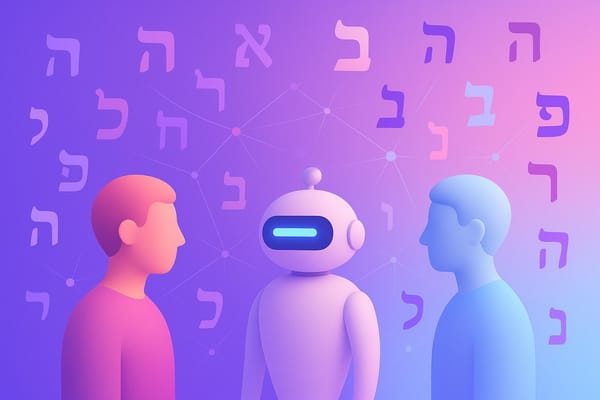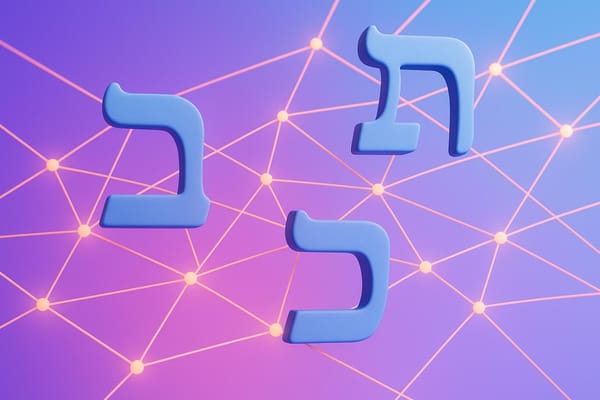5 Ways AI Handles Hebrew Humor in Translation
Explore how advanced AI tools tackle the challenges of translating Hebrew humor, preserving cultural context and comedic nuances.
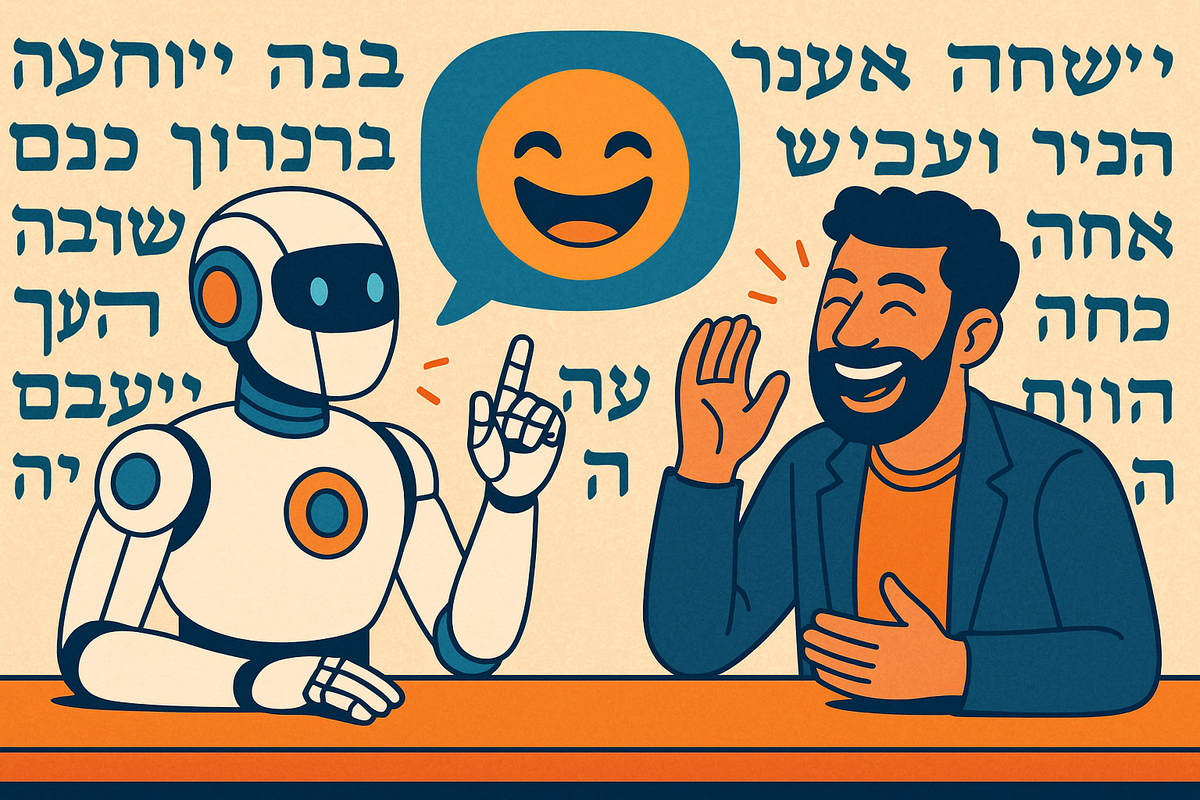
Translating Hebrew humor is tough. Why? It’s not just about words - it’s about meaning, tone, and cultural context. AI tools like baba aim to solve this by focusing on key areas:
- Self-Deprecating Jokes: baba preserves the humor’s wit and context.
- Sarcasm & Irony: Detects subtle cues and reflects the intended tone.
- Cultural References: Balances Hebrew-specific nuances with audience understanding.
- Idiomatic Expressions: Adapts Hebrew idioms for English while keeping the humor.
- Wordplay: Handles puns and gendered language effectively.
Most standard AI tools struggle with these, often translating jokes literally and missing the humor. baba stands out by using tools like Dynamic Context Recognition and Gender-Aware Processing to make translations more natural and engaging.
Quick Comparison
| Translation Aspect | baba's Performance | Standard AI Tools Performance |
|---|---|---|
| Cultural References | Maintains context and humor | Often literal, losing meaning |
| Idiomatic Expressions | Adapts idioms while keeping humor intact | Frequently loses humor in translation |
| Context Awareness | Considers tone, relationships, and intent | Limited to basic processing |
| Wordplay | Handles puns and gender-specific nuances | Struggles with complex Hebrew structures |
AI translation has improved, but tools like baba show how focusing on context and cultural depth makes a big difference. Want to see how it works? Check out baba at www.itsbaba.com.
Humor in Translation: A Guide to Culturally Adapting Your Stories and Jokes
1. baba's Hebrew Humor Translation
baba showcases a strong understanding of the intricacies of language and culture. Its advanced algorithms handle Hebrew's gender system and plural forms with precision, allowing it to tackle humor styles like self-deprecation while staying true to the cultural context.
Self-deprecating humor, a hallmark of Jewish comedy, is where baba's context-aware system truly shines. Hershey H Friedman explains, "Self-mockery is a common form of humor among Jews, who have faced oppression for thousands of years. It can serve various functions, such as showing superiority in wit, dealing with hardship, creating solidarity, and advancing social justice" .
baba ensures that the layered meanings of Hebrew humor are preserved. As Abraham Singer notes, "Historically it can be argued that during times of trial, tribulations, and suffering, Jewish communities and individuals have used humor as a way to cope with and deal with reality" . baba picks up on subtle sarcasm and irony while effectively translating culturally specific references.
Here’s how baba does it:
- Dynamic Context Recognition: Evaluates the relationship between speakers and listeners to maintain tone and meaning.
- Gender-Aware Processing: Handles Hebrew's gendered language to keep wordplay intact.
- Cultural Nuance Detection: Accurately translates idioms and culturally specific references.
Unlike basic translation tools that stick to literal interpretations, baba focuses on preserving the cultural richness of Hebrew humor while making it understandable for English-speaking audiences.
| Humor Element | baba's Approach |
|---|---|
| Self-deprecating jokes | Keeps the original wit intact |
| Sarcasm & Irony | Detects subtle cues and reflects the intended tone |
| Cultural References | Balances authenticity with audience relevance |
| Wordplay | Adapts Hebrew-specific puns for English readers |
In the next section, we’ll look at how other AI translation tools handle Hebrew humor, using baba's capabilities as a benchmark for comparison.
2. Standard AI Translation Performance
AI translation tools have come a long way, moving from basic rule-based systems to advanced neural machine translation (NMT) technologies. However, they still struggle with certain challenges, especially when it comes to translating Hebrew humor. These limitations highlight the areas where standard AI tools fall short.
One of the biggest hurdles is accurate word-sense disambiguation and contextual interpretation. As Claude Piron explains:
"Why does a translator need a whole workday to translate five pages, and not an hour or two? About 90% of an average text corresponds to these simple conditions. But unfortunately, there's the other 10%. It's that part that requires six [more] hours of work. There are ambiguities one has to resolve."
Even the top players in the market show mixed results:
| AI Translation Tool | Strengths | Limitations |
|---|---|---|
| DeepL | Strong with context | Limited language options |
| Lingvanex | Quick and free | Struggles with complex text |
| Tomedes AI | Combines human and AI | High resource requirements |
These limitations become even more apparent when dealing with specific challenges:
- Cultural References: AI tools often fail to account for cultural context. For instance, idioms like "break the ice" are translated literally into Indonesian as "memecahkan es", which loses the intended meaning .
- Contextual Understanding: Hebrew-specific entities, casual speech, and non-standard language often confuse AI systems, leading to awkward or incorrect translations.
While neural networks and large language models have improved translation quality, human post-editing is still essential to handle subtleties like humor . This gap is where tools like baba stand out, addressing many of these shortcomings with more advanced capabilities.
Direct Comparison of AI Tools
When it comes to translating Hebrew humor, not all AI translation tools are created equal. Let’s break down how different tools perform across key aspects of humor translation. This builds on earlier discussions about the challenges of translating Hebrew humor, especially its cultural nuances.
| Translation Aspect | baba's Performance | Standard AI Tools Performance |
|---|---|---|
| Cultural References | Retains cultural context with specialized Hebrew expertise | Often produces literal translations that miss cultural subtleties |
| Idiomatic Expressions | Adjusts expressions to keep both meaning and humor intact | Frequently falls into word-for-word translations, losing the comedic effect |
| Context Awareness | Considers dynamics between the speaker and audience | Limited to basic language processing |
| Timing and Delivery | Maintains the natural flow and rhythm essential for humor | Prioritizes linguistic accuracy over timing |
This comparison highlights a major distinction: baba stands out in preserving the cultural essence of humor, while standard AI tools often fall short in this area. As translation expert Seldean Smith aptly puts it:
"Translation isn't just about swapping words from one language to another; it's about understanding the culture behind those words"
Neural Machine Translation (NMT) Systems: Strengths and Weaknesses
Standard Neural Machine Translation (NMT) systems have improved significantly in terms of general translation quality. Under ideal conditions, they can even approach human-level accuracy . However, they still struggle with the subtleties of Hebrew humor, especially when it comes to cultural and contextual elements.
How baba Approaches Cultural Adaptation
Unlike conventional AI tools, baba focuses heavily on cultural adaptation. Here’s how baba tackles Hebrew humor:
- Dynamic Context Adjustment: Tailors translations to reflect the relationship between the speaker and listener.
- Cultural Reference Mapping: Ensures that cultural elements are preserved without losing their comedic intent.
- Adaptive Translation: Balances meaning and humor to deliver a natural, engaging result.
This approach allows baba to navigate the complexities of Hebrew humor while staying true to its cultural and linguistic roots. Standard AI tools, on the other hand, often require additional context to properly interpret cultural references . By integrating cultural understanding into its framework, baba provides translations that feel more natural and contextually accurate.
Conclusion
AI-driven Hebrew humor translation has made progress but still faces challenges. Recent research shows that 58.6% of users believe advanced AI systems are able to capture the essence of original humor effectively .
Combining Hebrew-specific language models with cultural context awareness has shown encouraging results. For example, TovTechOrg's work on large Hebrew language models highlights efforts to tackle the language's subtle complexities . Still, experts remind us that translation is more than words and grammar - it involves context, culture, and emotion. These are areas where AI continues to encounter hurdles . To address this, a hybrid approach blending AI tools with human expertise is gaining traction.
Looking ahead, researchers predict that hybrid models will improve outcomes. Already, 65.5% of users express satisfaction with AI-translated humor . Tools like baba are leading this charge, using advanced features such as dynamic context adjustments for cultural references, better handling of gender and plural forms, and real-time adaptation for idiomatic expressions.
The development of sophisticated open-source NLP tools for Hebrew is also expected to push AI capabilities further. Industry professionals stress that the best translation workflows utilize both AI's speed and human translators' cultural understanding . This combined method ensures efficiency while preserving emotional and cultural depth.
Want to try it yourself? Join the waitlist for our mobile app at www.itsbaba.com.


